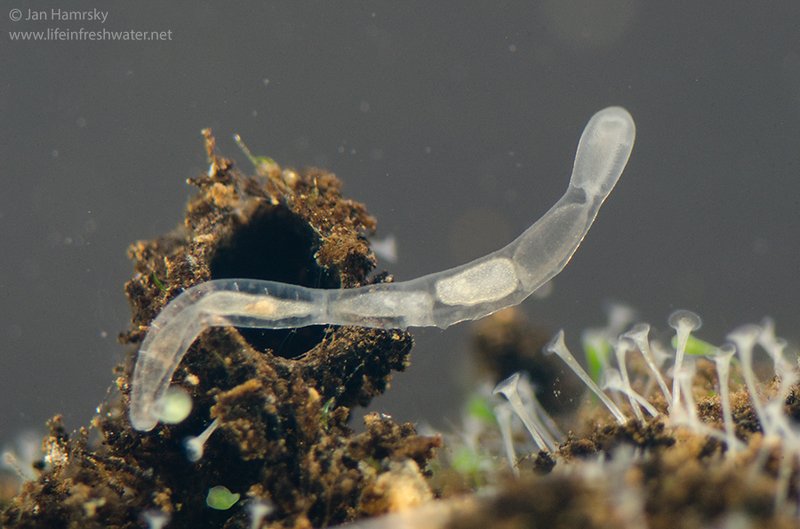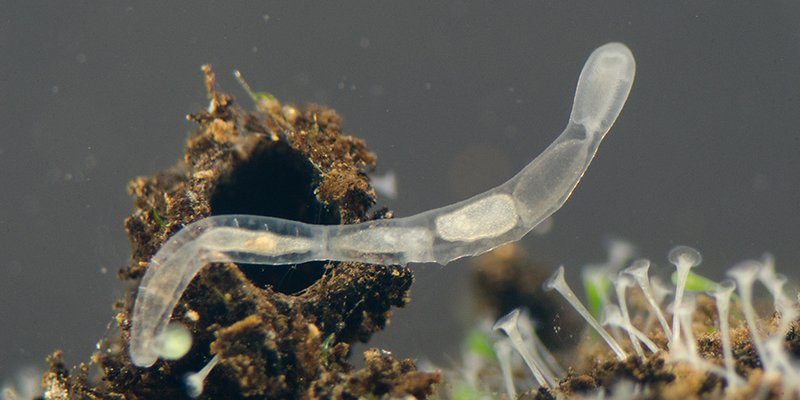
Think about oligochaetes as nature’s detectors. Just as a car’s dashboard lights up when there’s a problem, the presence and health of these worms can signal changes in water quality. They thrive in clean, well-oxygenated water but tend to struggle when pollution or habitat degradation occurs. So, if you want to understand the overall state of a river or lake, examining oligochaetes can provide important clues. Let’s dive deeper into how oligochaetes function as bioindicators and why they’re so valuable in environmental monitoring.
What Are Freshwater Oligochaetes?
Freshwater oligochaetes are segmented worms that belong to the phylum Annelida. You might have heard of a familiar oligochaete: the earthworm. But these aquatic worms are quite different from their terrestrial relatives. They typically range from a few millimeters to several centimeters in length. Oligochaetes have soft bodies, no distinct head, and they breathe through their skin, making them sensitive to changes in their environment.
One fascinating thing about oligochaetes is their diet. They feed mainly on decomposing organic matter and microorganisms that thrive in sediment. This diet makes them key players in the nutrient cycle of freshwater ecosystems. In simpler terms, they help break down waste and recycle nutrients, which is essential for maintaining a healthy aquatic environment.
You might be surprised to know that there are over 300 species of freshwater oligochaetes! Some common examples include *Lumbriculus terrestris* and *Tubifex tubifex*. Each species can indicate different environmental conditions, which is why scientists often choose oligochaetes for monitoring efforts.
Why Use Oligochaetes for Environmental Monitoring?
Using oligochaetes in environmental monitoring is like having a built-in health check for aquatic ecosystems. These worms are sensitive to changes in water quality, making them excellent bioindicators. By studying their populations, scientists can gauge the overall health of freshwater environments without relying solely on complex chemical tests.
Here’s the thing: oligochaetes react to various stressors such as pollution, temperature changes, and habitat disruption. When water conditions change, the abundance or diversity of oligochaetes can shift dramatically. For example, if pollutants like heavy metals seep into a river, it’s likely that the oligochaete population will decline. This provides a clear signal that something is wrong.
Moreover, oligochaetes are relatively easy and inexpensive to collect and analyze. Researchers can simply gather sediment samples from different locations and identify the oligochaete species present. This makes them an accessible choice for environmental monitoring, especially for community science projects or educational programs.
How to Monitor Environmental Health Using Oligochaetes
Now that we know why oligochaetes are essential, let’s look at how scientists monitor them. The process usually involves several key steps:
- Sample Collection: Researchers collect sediment samples from designated locations in the water body. This often involves using a core sampler or grabbing a scoop from the bottom.
- Sorting and Identification: The samples are then sorted in a lab where the oligochaetes are extracted. Identification usually requires a microscope to differentiate between species.
- Data Analysis: Once sorted, scientists analyze the data to look for patterns in species abundance and diversity. This information helps them assess the health of the ecosystem.
- Reporting Results: Finally, the data is compiled into reports that detail the findings and may suggest actions for improving water quality if needed.
This methodical approach allows scientists to paint a picture of water quality over time, contributing to more effective conservation efforts.
Benefits of Using Oligochaetes in Bioindication
Using freshwater oligochaetes as bioindicators comes with a host of benefits. First, their sensitivity to environmental changes means that they can provide early warnings of issues in freshwater systems. This allows for timely interventions, potentially preventing larger ecological problems.
Second, oligochaetes can serve as indicators of different types of pollution. For instance, some species thrive in polluted waters, while others only exist in clean environments. By tracking which species are present, researchers can pinpoint the type and severity of pollution affecting a water body.
Furthermore, using oligochaetes can promote community involvement in environmental science. Educational programs that teach people about these worms can inspire a broader understanding of ecosystem health. When communities get involved in monitoring efforts, it fosters a deeper connection to local waterways and encourages conservation.
Comparing Oligochaetes to Other Bioindicators
While oligochaetes are valuable, they’re not the only game in town when it comes to environmental monitoring. Other organisms, like macroinvertebrates (think insects and crustaceans), also serve as excellent bioindicators. However, oligochaetes have some distinct advantages.
For one, oligochaetes are often more abundant and easier to sample than some macroinvertebrates. This means researchers can get a clearer picture of ecosystem health without extensive sampling techniques. Additionally, because they live in the sediment, they can provide data on conditions over time, rather than just snapshot moments.
On the other hand, macroinvertebrates can tell us a lot about various environmental factors too, such as water flow and habitat complexity. A combined approach using both oligochaetes and macroinvertebrates can offer comprehensive insights into freshwater ecosystems. This multi-faceted monitoring strategy can ultimately lead to better management practices.
The Future of Oligochaete Monitoring
As environmental challenges grow, the role of oligochaetes in monitoring is more important than ever. Scientists are now exploring new methods to enhance this type of monitoring. For instance, advances in molecular techniques can help improve species identification. DNA barcoding can provide even more accurate insights into which species are present in a sample.
In addition, technology is making its mark. Automated sampling devices and data analysis software are streamlining the process, making it easier to gather and interpret data. This means that even minor changes in oligochaete populations can be detected more quickly.
Ultimately, these developments can lead to more effective conservation strategies. By keeping a close eye on oligochaetes, we can better safeguard our freshwater ecosystems and ensure they remain healthy for future generations.
Using freshwater oligochaetes for environmental monitoring or bioindication offers a fascinating and effective way to understand the health of our aquatic ecosystems. These small worms may not grab headlines, but their role in signaling changes in water quality is invaluable. By monitoring their populations, we gain insights that can help protect our environment.
As we move forward, embracing oligochaetes in our monitoring efforts can pave the way for healthier waterways. The more we recognize their importance, the better equipped we become to tackle environmental challenges. So, the next time you think about water quality, remember these little heroes lurking beneath the surface—they might just hold the key to a cleaner, greener future.

